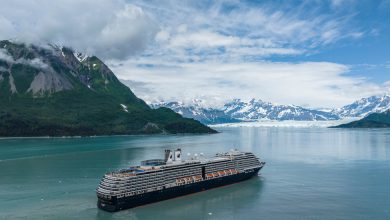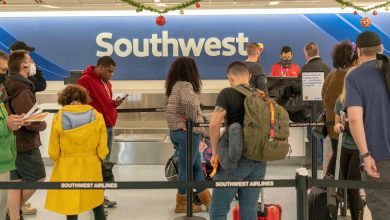How to Ski Smarter in the Age of Multi-Mountain Passes

The two companies that control the ski industry, Vail Resorts and Alterra Mountain Co., have spent years nudging skiers toward multi-resort season passes and away from single-day lift tickets. Along with the Mountain Collective, a third multi-mountain pass, they have continually added resorts, bumped up perks and this year, dropped the cost of passes. Meanwhile, Vail and Alterra have increased prices for one-day lift tickets beyond $200 at some mountains.
Skiing is now part of the subscription economy, and being tactical about a multi-resort pass can reduce costs and put skiers on the snow for more days among fewer people. Consider this a guide to selecting a pass, getting the most out of it and staying clear of crowded resorts and ugly lift lines.
The back story
The passes — Epic from Vail, Ikon from Alterra and a namesake from the Mountain Collective — work similarly, granting holders different amounts of access, based on price, to ski resorts across North America and beyond. Over the years, the passes have driven a good deal of intrigue: resorts switching sides, bidding wars for stalwart mountains and the various refund policies enacted in the wake of the coronavirus. This March, Vail surprised the skiing world with a 20-percent drop in Epic prices, making its full pass nearly $300 cheaper than Ikon.
Vail’s move salved Epic holders who felt jilted by a rigid refund policy last winter, and it gave Ikon loyalists a reason to consider Epic. It seems to have worked: In September, Vail said it had sold 42 percent more passes than at same point in 2020, and 67 percent more than 2019.
Despite last winter’s limitations, U.S. resorts saw 59 million skier and snowboarder visits, the fifth most recorded. If pass sales offer a guide, this season could be busier. Sensing a revenue opportunity, this year the ski resort operator Powdr introduced a “Fast Tracks” program, which will allow skiers at four of its Ikon-partnered resorts — Snowbird, Copper Mountain, Mt. Bachelor and Killington — to pay an extra fee, $49 and up, to bypass lift lines.
What to know about Epic
Now priced at $819, due to increase Nov. 21, the Epic pass grants full access to 34 North American mountains, with many resorts in Colorado and the Lake Tahoe region. Vermont’s Stowe and New York’s Hunter Mountain are among the pass’s 14 options in the Northeast.
Additionally, skiers get five or seven days of access to four mountains in the Canadian Rockies, 11 resorts in Japan, four resort areas in Europe (France, Italy, Switzerland, Austria) and full access to three Vail-owned hills in Australia. The Epic Pass comes in several variations, including the Epic Local, which is $200 cheaper and blacked out during popular dates around Thanksgiving, Christmas and other holidays. Vail also sells Epic passes focused on regions and resorts, including the Tahoe Local and the Keystone Plus passes.
The Epic Day Pass, which can be bought in increments of one to seven days, is an option for skiers taking one trip, as it can reduce the daily price to $60. Day passes purchased for four days or longer are valid at Epic partners and offer a hack to skiing Telluride and Sun Valley, where they roughly halve the daily cost to as low as $78.
What to know about Ikon
The main Ikon Pass, which runs $1,149, grants skiers full access to 15 North American mountains and up to seven days at 22 other resorts on the continent. Ikon is strongest in Colorado, Utah, California and the Northeast. In Europe, the Ikon Pass grants seven days of skiing to Zermatt in Switzerland and to specific resorts in Italy’s Dolomites and around Kitzbühel in Austria.
Ikon gives Northeast skiers 10 hills to pick from, with some big destinations in Vermont’s Killington and Sugarbush. West Virginia’s Snowshoe gives Washington, D.C.-area skiers an option 4.5 hours away and New York’s Windham Mountain is 3.5 hours from New York City.
The Ikon Base Pass costs $879 and comes with holiday blackouts similar to the Epic Local, with only five days at partner resorts rather than seven. Base Pass access to Wyoming’s Jackson Hole and Colorado’s Aspen costs an extra $150.
Ikon’s $499 Session Pass gives skiers four total days across 38 mountains. Here, too, blackout dates apply.
Don’t overlook the Mountain Collective
Skiers seeking value on multiple short trips should consider the Mountain Collective, which grants skiers two free days at each of the pass’s 23 resorts, with days three and beyond discounted 50 percent. The Collective comes in one form and runs $589, which can usually be recouped in just two weekend trips.
The lineup is similar to that of Ikon’s, but it’s missing some mountains such as Steamboat, Winter Park and Deer Valley. In Europe, the Collective grants access to three mountains around Chamonix, France.
And what to know about avoiding the crowds
Before the pandemic shut slopes in 2020, Epic and Ikon holders swarmed popular resorts, triggering backlash from some locals. Crowds will be a reality again this winter and major ski areas that are easy drives from large metro areas — particularly Denver, Salt Lake City and California’s Bay Area — can be jammed on weekends.
In Denver, many local residents hit the road early on winter weekends, packing I-70 and the slopes closest to the Front Range. To avoid this crush, ski the resorts closest to Denver during the week — Vail, Breckenridge, Keystone, Beaver Creek on Epic, and Winter Park, Copper Mountain and Arapahoe Basin on Ikon. For weekends, go farther out.
For Ikon skiers, that means Steamboat and Aspen. Steamboat can bustle on weekends, but it’s mellower than mountains closer to Denver. Aspen offers one of the best skiing experiences in the West, spreading skiers across four mountains, and a strong value for both Ikon and Collective skiers — a full-season pass there runs more than $2,000.
For Epic skiers, Crested Butte and Telluride offer sparser slopes and superb old towns. Epic skiers get full access at Crested Butte, but it’s twice as far from Denver as Vail’s flagship resorts. Telluride’s steep slopes dive straight into the 143-year-old town and rarely see lift lines. It’s the farthest major Colorado mountain from Denver and it lacks the big hotels that ring other base areas. Leveraging Epic here is a great value — a Telluride season pass runs nearly $2,000. The Epic Local offers no access to Telluride.
In Utah, Salt Lake City’s growth has put weekend pressure on Park City, Alta and Snowbird, so ski these during the week. The latter two, Ikon resorts, offer the additional challenge of Little Cottonwood Canyon, whose narrow road becomes a caterpillar of cars on Saturdays. When Park City’s 7,000 acres fill up on weekends, Epic holders should look to Vail partner Snowbasin, about an hour away near Ogden.
Ikon skiers have a lot of options in Utah. On Saturdays, skiers should head to Big Cottonwood Canyon, where Solitude and Brighton, which receive similarly large amounts of snow as Alta and Snowbird, offer slopes with fewer people. Deer Valley, positioned in Park City on the other side of the Wasatch, limits the number of skiers and is a good play on weekends. A season pass at Deer Valley, the only Alterra-owned resort at which Ikon passholders don’t receive full access, runs nearly $3,000, and single days can touch $249, so using Ikon here delivers good value.
In California, the Bay Area has seven million people and plenty of disposable income, which help crowd I-80 and resort parking lots. In Tahoe, Ikon and Collective skiers have one option, Palisades Tahoe, the erstwhile Squaw Valley-Alpine Meadows. The mountain offers legendary upper terrain, but its slopes can get overwhelmed on weekends. Epic skiers have three good choices in Tahoe. On weekends, rather than hitting Heavenly or Northstar, skiers should trek further south to Kirkwood and start their day early.
Farther south in the Sierra, Mammoth gives Los Angeles skiers a chance to use their Ikon and Collective passes. Mammoth, the best preserver of snow in California, gets busy on weekends, making the smaller June Mountain, which has 2,500 vertical feet of skiing about 30 minutes down the road, a good play for Ikon skiers.
Elsewhere, British Columbia’s Whistler-Blackcomb beckons skiers from across the world, especially Epic holders, who get full access. Wyoming’s Jackson Hole helps drive Ikon and Collective sales as a bucket-list destination. But last season Ikon and the Collective added Grand Targhee, a Wyoming mountain on the other side of the Tetons, an hour from Jackson. Targhee gives skiers a low-key change of pace with smaller lift lines on the weekends and even more snow than Jackson.
A few hours north of the Tetons, Montana’s Big Sky offers wide ribbons of intermediate terrain and challenging fall lines off Lone Peak (the tram requires a daily upcharge of $20 to $80 for Ikon and Collective holders). In New Mexico, Taos gives Ikon and Collective skiers a steep option that rarely sees lift lines. Big Sky gets busier during holidays and during March Spring Break, but Taos doesn’t see crowds outside of the prime week between Christmas and New Year’s Day.
Follow New York Times Travel on Instagram, Twitter and Facebook. And sign up for our weekly Travel Dispatch newsletter to receive expert tips on traveling smarter and inspiration for your next vacation. Dreaming up a future getaway or just armchair traveling? Check out our 52 Places list for 2021.





